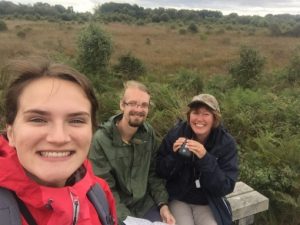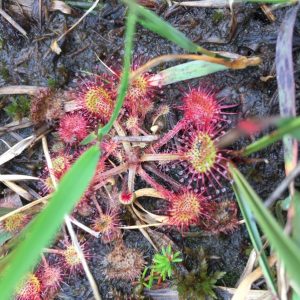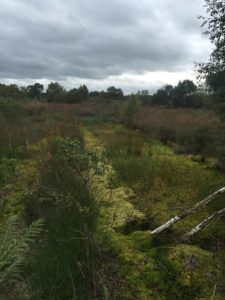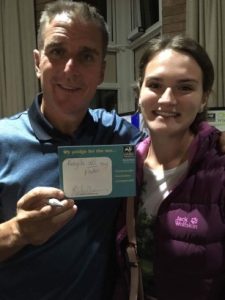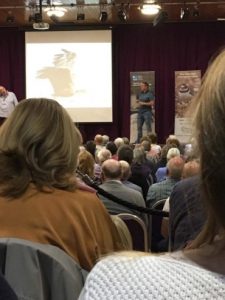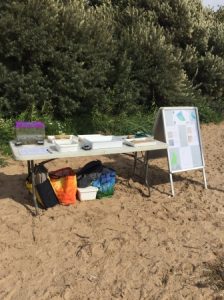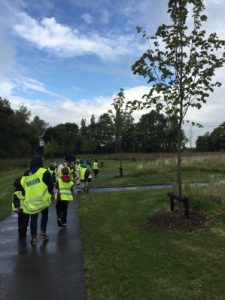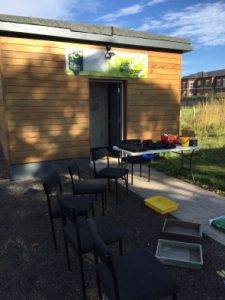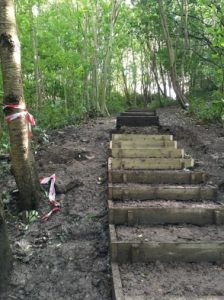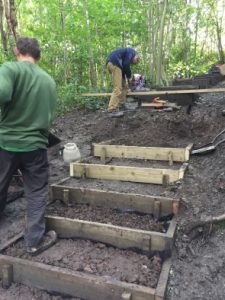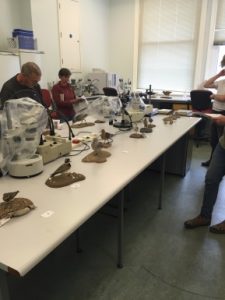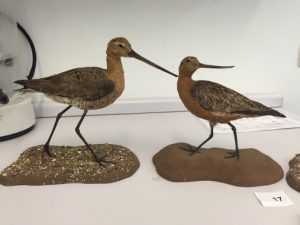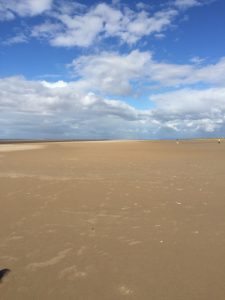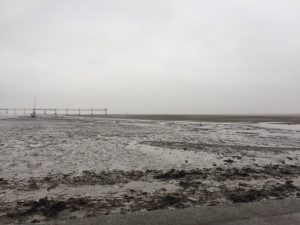
Although schools were open again and events quietened down, September still seemed to be a busy month and flew past!
Trainee catch ups
The first week has to be one of the best of my traineeship so far. It started off with a lovely catch up with Sue and Ross, two other trainees, at Whixall Moss in Shropshire. The invertebrate and plant species we found were incredible, I loved learning from Sue and Ross and seeing what species they worked with on a day to day basis.
Ross had told me about the Round-leaved Sundew plant that traps small insects with a sticky substance and then digests them. I then managed to find it out on the moss! Sue taught me about Sphagnum Moss, the luscious carpets are actually made up of many individual mosses. Each strand is spongy and saturated, they eventually form peat beds. When we got up close the moss has a distinct but surprisingly nice and fresh smell!
Wirral Wader Festival
The Friday after our trip I went to an incredible talk by Iolo Williams all about the coast, then was lucky enough to meet him after. He was so interesting and a very nice person, he even signed one of The Wildlife Trust ‘pledge for the sea’ postcards we have been using over summer. His pledge to recycle all his plastics highlights the very real danger our oceans are currently facing.
Companies are however now starting to move in the right direction concerning plastic pollution in our oceans.
- Sky has pledged to remove all single use plastics from its operations by 2020.
- Wetherspoons are removing plastic straws from their establishments by 2018, replacing them instead with biodegradable paper ones.
- Tesco have committed to removing all microbeads from their own brand products by the end of 2017, several other supermarkets are now following suit.
- Johnson and Johnson have successfully swapped the production of plastic cotton wool buds to paper ones, however this is only currently in Europe.
All of these changes are definitely positive and will help the future of our oceans.
The talk by Iolo kicked of the Wirral Wader Festival where I ran my own stall all about mudflats! I collected live specimens and taught adults and children about what they can find and why our mudflats are so valuable. I was based on Red Rocks beach over in the Wirral and watched the tide come in around Hilbre Island through the day. We spotted many wading birds and everyone had a great time (the torrential showers didn’t hit us until the end of the day!).
TCV Big Green Weekend
Another event I got to take part in was the TCV Big Green Weekend, I was with TCV Merseyside in the Countess of Chester Country Park. I helped Tony Parker from Liverpool World Museum run a mini beast hunt for two local schools. The sessions were great, the children were so enthused and interested, even some light showers didn’t put them off! I look forward to doing more work with school groups as teaching conservation from a young age is something I thoroughly support.
I joined TCV Merseyside’s mid week group on a couple of occasions this month. We were in St Helens replacing very old and unsuitable steps in a local woodland. This work is hard but very rewarding and it is great to get out with the group doing community work. The steps were made from scratch, placed to be smaller and flatter to be more accessible and newly dug into the steep hill. New footpaths were also created around the site.
Liverpool World Museum workshops
I attended my first free workshop at the Liverpool World Museum. This one was on British Wading Birds and again ran by Tony Parker. I cannot recommend these workshops enough, I have signed up for more and I am now going to run my own on ‘Beached Marine Life’. You learn from specialists and gain so much information and knowledge by exploring specimens stored behind the scenes of the museum. Find out more here and be quick to book on as spaces fill fast!
I now feel a lot more confident with identifying British Wading birds and can put myself to the test when watching them feed out on the mudflats.
Site surveying
Gez and I visited Ainsdale this month, a regular site I use, to see what shells were around. We came back with many which are fun to clean, sort through and identify. I will be collecting and surveying in this way regularly, preparing a collection for the Beached Marine Life workshop in the museum.
Myself and my mentors, Sally and Gez, visited a new site to survey this month- Speke Garston. This site is more in the estuary than coastal and so was a great comparison. On low tide we made our way down a getty, used by Liverpool Sailing Club, that allowed us to get much further out onto a mudflat than ever before. This will be an excellent site to dig around on, I even noticed a difference in the shells that washed up. In this much muddier and more sheltered habitat I only found shells that bury themselves in the mud rather than species that float in the sea. It was a very foggy and rainy morning but still the site looked picturesque.

